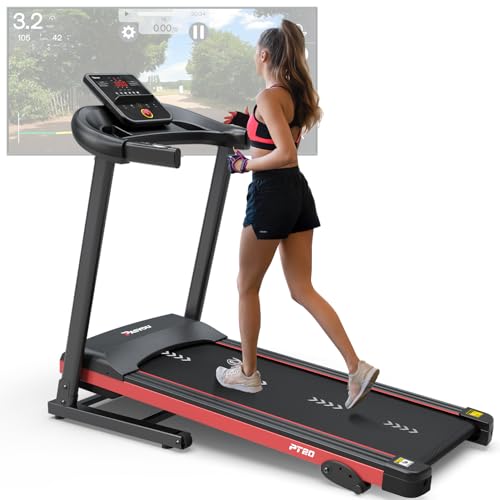How To Resolve Issues With Walking Pad Non Electric
Exploring the Benefits of Walking Pads: The Non-Electric Choice
In the age of modern-day fitness services, where technology rules supreme and sophistication is frequently connected with electrical makers, a brand-new trend is emerging in useful exercise: the non-electric walking pad. These simple yet effective tools are catching the interest of fitness lovers and casual walkers alike.
In this extensive guide, we will explore what walking pads are, their benefits, contrasts with standard treadmills, and offer responses to often asked concerns.
What is a Walking Pad?
A walking pad is a compact exercise platform developed mainly for walking, jogging, or light running. Unlike traditional treadmills which count on electrical power, non-electric walking pads run on a manual system. Walking Pad Non Electric propel themselves forward by walking or running, harnessing their own body weight.
Secret Features of Non-Electric Walking Pads:
- Compact Design: Most walking pads are lightweight and foldable, making them simple to store and transport.
- User Controlled: The speed and strength of the workout depend upon the user's own effort.
- No Plug Required: Perfect for energy-conscious people, these pads need no power intake.
- Quiet Operation: A quieter alternative to electric treadmills, making them appropriate for homes or shared areas.
Advantages of Using Non-Electric Walking Pads
Utilizing a non-electric walking pad presents a range of benefits. Below are a few of the popular benefits:
Benefit
Description
Affordable
Non-electric models are normally more budget friendly than their electric counterparts, making them accessible to a more comprehensive audience.
Boosted Flexibility
Users can walk or jog at their own speed, which is especially advantageous for beginners or those recovering from injuries.
Space-Saving Design
Due to their compact size, walking pads fit comfortably in smaller areas, making them perfect for home or workplace use.
Low Maintenance
Without any electrical parts, these pads need very little upkeep and are less most likely to break down.
Environmentally Friendly
No electricity suggests no ecological impact from energy consumption, making them an excellent choice for eco-conscious consumers.
Comparing Non-Electric Walking Pads to Traditional Treadmills
Function
Non-Electric Walking Pad
Traditional Treadmill
Power Source
Manual (user-powered)
Electric (plugged in)
Cost
Lower upfront cost
Greater initial investment
Size
Compact and portable
Larger, typically stationary
Sound Level
Extremely peaceful
Can be loud, depending upon motor and use
Modification
Limited user settings
Substantial settings (speed, incline, programs)
Physical Engagement
Greater intensity and effort required
Much easier to use but might encourage less engagement
How to Use a Non-Electric Walking Pad
Using a non-electric walking pad is simple. Here's a simple step-by-step guide:
- Set Up: Place the walking pad on a flat, steady surface.
- Adjust the Pad: Ensure that it is at a comfortable position for usage— most pads have adjustable angles to customize the walking experience.
- Warm-Up: Before using the pad, perform a short warm-up regimen, which can consist of gentle extending.
- Start Walking: Step onto the pad and start walking at a moderate rate. As your speed boosts, you will observe the pad moving.
- Display Your Intensity: Pay attention to your heart rate and how you feel. Change your speed according to your physical fitness level.
- Cool Down: Gradually decrease your speed before stepping off the pad, followed by cooldown stretches.
Best Practices for Using Walking Pads
To make the most of the advantages of non-electric walking pads, think about the following ideas:
- Incorporate Variety: Alternate in between walking and jogging for a full-body workout.
- Engage Your Core: Maintain great posture by keeping your core engaged while utilizing the pad.
- Hydration: Remember to hydrate before and after your workout.
- Consistency: Aim to utilize the walking pad frequently. Start with 15-20 minutes and gradually increase the period.
Frequently Asked Questions
1. How reliable are non-electric walking pads for weight loss?
Non-electric walking pads can be effective for weight-loss when utilized consistently in conjunction with a healthy diet. Because they require more effort, they can allow higher caloric expenditure throughout exercises.
2. What is the weight capacity of the majority of walking pads?
Many non-electric walking pads can support people up to 250-300 pounds, depending upon the model. Always inspect the manufacturer's requirements for precise info.
3. Are there any recommended brand names for walking pads?
Some popular brands consist of InMovement, ProForm (manual designs), and ECHANFIT, each providing a variety of features tailored to varied user preferences.
4. Can non-electric walking pads be used outdoors?
These walking pads are normally designed for indoor use. Using them outdoors might expose them to weather conditions that might affect their durability.
5. How do I save a walking pad?
Numerous non-electric walking pads are foldable. Just fold them up and keep them in a closet, under a bed, or any convenient area.
Non-electric walking pads provide a distinct and reliable aerobic exercise option that stresses simpleness and ease of access. By permitting users to develop their physical fitness program without the limitations of power cables and complicated interfaces, these pads empower individuals throughout various physical fitness levels.
For anyone searching for a budget-friendly, space-saving, and efficient option to traditional exercise devices, exploring the world of non-electric walking pads might be the perfect next action in their fitness journey. By choosing to invest in among these versatile tools, individuals can cultivate healthier practices while taking pleasure in the empowering experience of movement by themselves terms.
